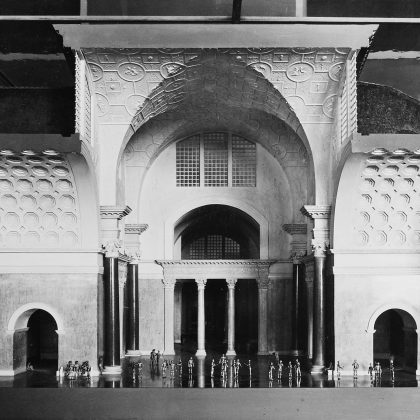Early Judeo-Arabic Birth Narratives in the Polemical Story “Life of Jesus” – Toledot Yeshu
Until 5th October 2020, enjoy free access to Miriam Goldstein’s full article Early Judeo-Arabic Birth Narratives in the Polemical Story “Life of Jesus” (Toledot Yeshu) as published in Harvard Theological Review
At some point in Late Antiquity, a scandalous polemic against Christianity emerged somewhere in the East—perhaps in Babylonia, perhaps in the Levant. This was a work quite different from the polemical texts that had been composed until then, scattered texts and writings throughout rabbinic literature, although it was certainly—at least in part—indebted to them. This was the first composition penned as an anti-Christian work, from beginning to end. Even worse, the contents of this creation were exceptionally problematic outside the Jewish community. The text, written anonymously, was a parody of the last days of Jesus—a type of “anti-Gospel” in which the Christian narratives of Jesus’ life and death were subjected to ridicule through inversion and in which Christian foundation myths were mocked and upended. This text came to be known as Toledot Yeshu (TY) —the life story of Jesus.
At some point during the transmission of the work, this brief and often legalistic narrative was expanded by the addition of an account of Jesus’s birth, along with sections relating to the development of Christianity. This longer composition apparently began circulating in Hebrew among a wide swath of Jewish communities in Europe, as early as the 13th century. However, the earliest renditions of this expanded TY narrative are preserved in Judeo-Arabic, the type of Arabic used by Jewish authors living in Arabic-speaking lands. Indeed, this polemical narrative is strikingly well-represented in medieval Judeo-Arabic manuscripts, and was transmitted continuously within Arabic-speaking Jewish communities, in numerous copies in Judeo-Arabic and in Hebrew, from at least the 11th century CE until nearly the present day.
Why would medieval Arabic-speaking Jews, living under Muslim rule, have been so interested in reading and transmitting this parody of the life of Jesus? This question becomes more acute when we remember that copying, reading, declaiming and transmitting TY in Arabic would have been extremely dangerous in this milieu. Not only would TY have offended Christians, a significant population in the Near East during the early centuries of Muslim rule, but Muslims as well would have been offended by the insulting depiction of Jesus (ʽĪsā), a revered prophet in Muslim tradition.
One answer is to be found within the Judeo-Arabic manuscripts themselves. During Late Antiquity and the early Islamic period, polemic against Christian claims was certainly a central motivation for the literary development and circulation of TY. But as polemical needs waned, Jewish reading practices of TY in the Near East changed. By the 13th century and beyond, Judeo-Arabic manuscripts of TY were composed in the style of Arabic popular literature, and were inevitably included in collections of such. TY enjoyed great popularity in this new genre, and circulated extensively in Judeo-Arabic as well as in Hebrew. Its popularity grew to the extent that this anti-Christian parody is nearly as well-attested in manuscripts from Near Eastern Jewish communities as in those of their European counterparts. From pernicious polemic to popular parody, the various incarnations of TY offer a fascinating perspective on the way medieval texts preserve their relevance, in changing times and changing locales.






This looks great but the article is not open access.